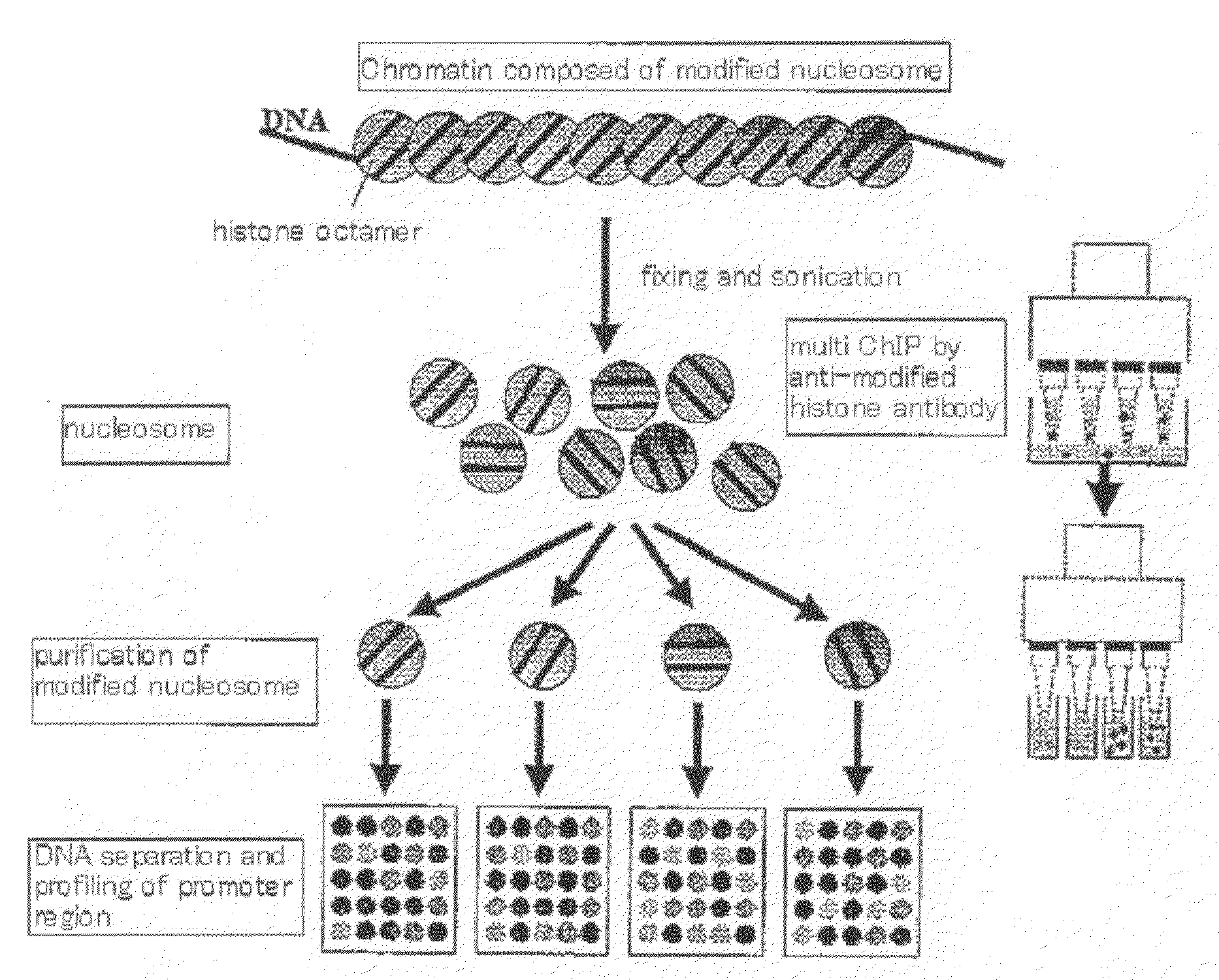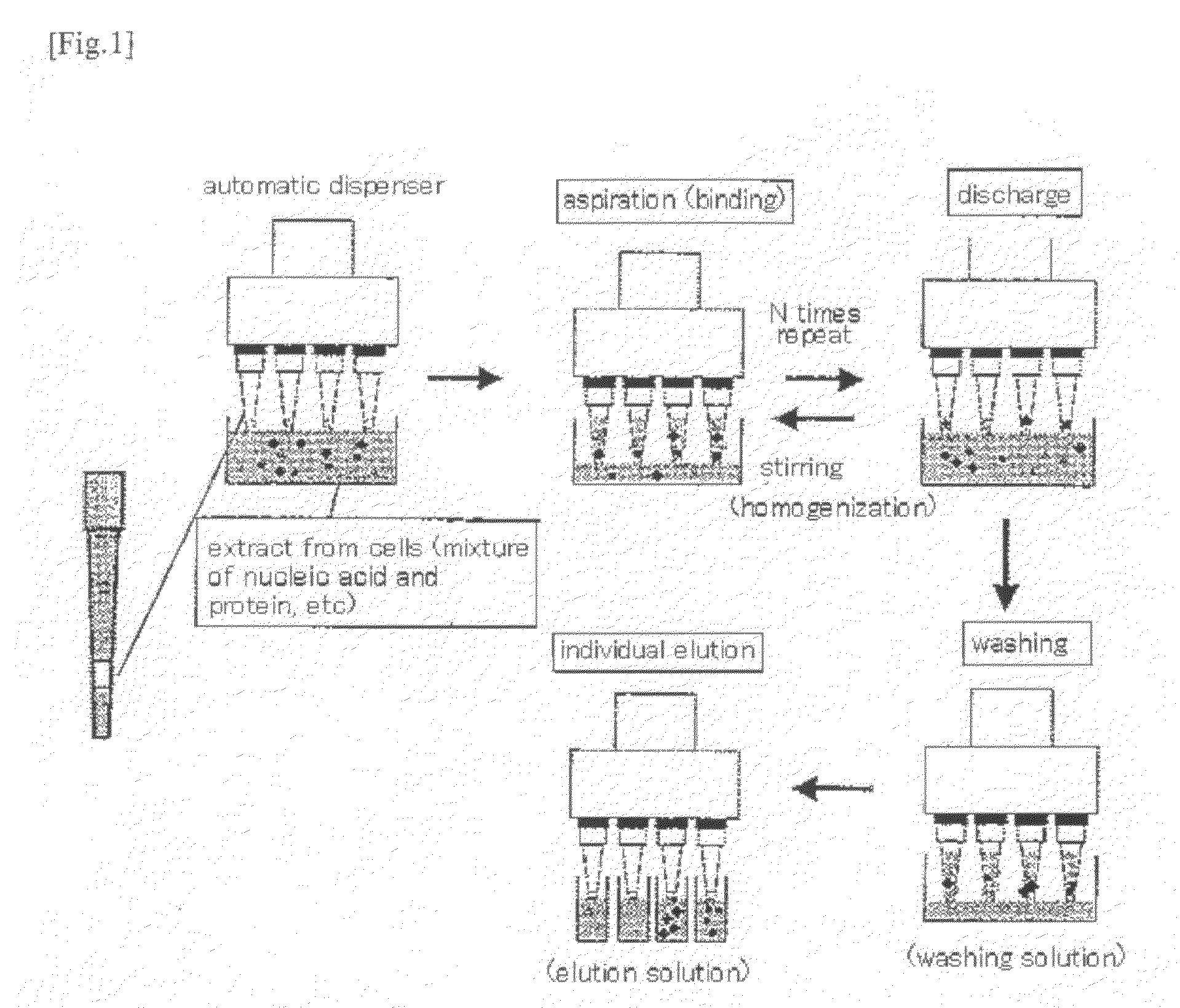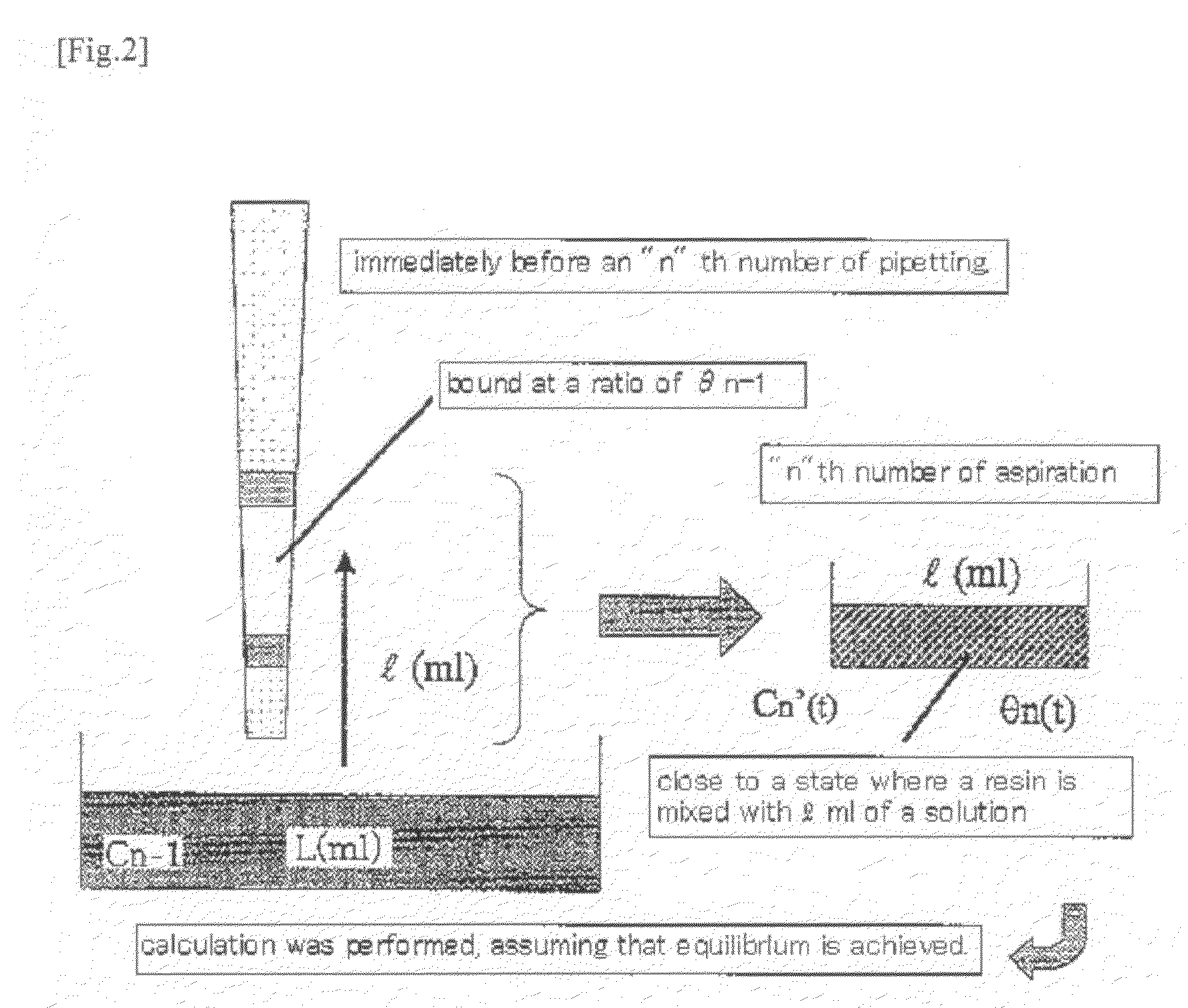Method for isolation of biopolymer by using re-circulating chromatography
a biopolymer and chromatography technology, applied in chemical methods analysis, instruments, analysis using chemical indicators, etc., can solve the problems of many unexplained portions, insufficient simple sequence information in the study method of rna analysis,
- Summary
- Abstract
- Description
- Claims
- Application Information
AI Technical Summary
Benefits of technology
Problems solved by technology
Method used
Image
Examples
example 1
Simultaneous Purification of 3 Types of Escherichia coli Transfer RNAs (tRNAs) by Reciprocal Circulating Chromatography
(1) Production of Chip
[0040]A 3′-end biotinylated DNA probe that was complementary to the sequence of each tRNA was allowed to bind to a Streptavidin Sepharose HP (Amersham) resin according to a common method.
Sequences of Used Probes
[0041]
(SEQ ID NO: 1)For tRNALys: TGGGTCGTGCAGGATTCGAACCTGCGACCA(SEQ ID NO: 2)For tRNAGlu: CGTCCCCTAGGGGATTCGAACCCCTGTTA(SEQ ID NO: 3)For tRNAAsp: CGGAACGGACGGGACTCGAACCCGCGACCCFor tRNALys: 1.20 A260 unit / 50 μl resinFor tRNAGlu: 1.13 A260 unit / 50 μl resinFor tRNAAsp: 0.40 A260 unit / 50 μl resin
[0042]A 300-μl chip was filled with a filter, and it was then filled with 50 μl of a resin, to which each probe had been bound. On such a resin, another filter used for an upper portion was placed with a slight gap.
(2) Binding to Resin
[0043]As a sample solution, an RNA mixed solution produced by partial purification of the total RNA of Escherichia co...
example 2
Simultaneous Automatic Isolation of 8 Types of tRNAs of Escherichia coli
[0048]Using a reciprocal circulating chromatography device, 8 types of tRNAs of Escherichia coli were simultaneously and automatically isolated and purified. As targets, Escherichia coli tRNAMet, tRNAfMet, tRNAPhe, tRNAPro1, tRNAPro2, tRNAPro3, tRNASec, and tRNATrp were used.
(1) Concerning Production of Reciprocal Circulating Chromatography Device
[0049]A reciprocal circulating chromatography device was produced by combining the following components, based on a 8-series multi-channel dispenser NSP-mini (Nichiryo Co., Ltd.).
[0050]Sample-stirring pump: PSP170AA peristaltic pump (ADVANTEC)
[0051]Water-supplying pump: QVG50-H1CTC-LF-type FMI pump (Yamazen Corp.)
[0052]Temperature controller: Biocell temperature controller BSTC-1 type and BSTC-2 type (Intecs, Sakaguchi-giken)
[0053]Personal computer used in production of program: Windows PC
[0054]In PSP170AA, ON and OFF can be controlled by external signals. Its I / O term...
example 3
Simultaneous Automatic Isolation of 8 Types of Non-Coding RNAs of Budding Yeast
[0071]Using a reciprocal circulating chromatography device, 8 types of non-coding RNAs of budding yeast (S. cerevisiae) were simultaneously and automatically isolated and purified. As targets, U4 RNA, U6 RNA, 7SL RNA (SCR1), SNR5, SNR9, SNR128, SNR190, mitochondrial tRNAMet were used.
[0072]
U4 RNA:CACTGATATGCGTATTTCCCGTGCATAAGG(SEQ ID NO: 12)U6 RNA:CATCCTTATGCAGGGGAACTGCTGATCATC(SEQ ID NO: 13)SCR1:ACGCTGGATAAAACTCCCCTAACAGCGGTG(SEQ ID NO: 14)SNR5:TATAGACATATGGAGGCGTGATGTCTTAAG(SEQ ID NO: 15)SNR9:GACTAATGATAGGTGGGTCAGGATATCAGC(SEQ ID NO: 16)SNR128:CCGTGGAAACTGCGAATGTTAAGGAACCAG(SEQ ID NO: 17)SNR190:GCTCAGATCTGCATGTGTTGTATAACACTG(SEQ ID NO: 18)mt tRNAMet:TTATTTATTTATGAGACAAATGTTTTAACC(SEQ ID NO: 19)
(1) Production of Chip Column
[0073]A chip column was produced in the same manner as that in Example 2.
(2) Immobilization of Probe
[0074]A probe was immobilized on the chip in the same manner as that in Example 2. T...
PUM
| Property | Measurement | Unit |
|---|---|---|
| affinity | aaaaa | aaaaa |
| chromatography | aaaaa | aaaaa |
| three-dimensional structure | aaaaa | aaaaa |
Abstract
Description
Claims
Application Information
 Login to View More
Login to View More - R&D
- Intellectual Property
- Life Sciences
- Materials
- Tech Scout
- Unparalleled Data Quality
- Higher Quality Content
- 60% Fewer Hallucinations
Browse by: Latest US Patents, China's latest patents, Technical Efficacy Thesaurus, Application Domain, Technology Topic, Popular Technical Reports.
© 2025 PatSnap. All rights reserved.Legal|Privacy policy|Modern Slavery Act Transparency Statement|Sitemap|About US| Contact US: help@patsnap.com



